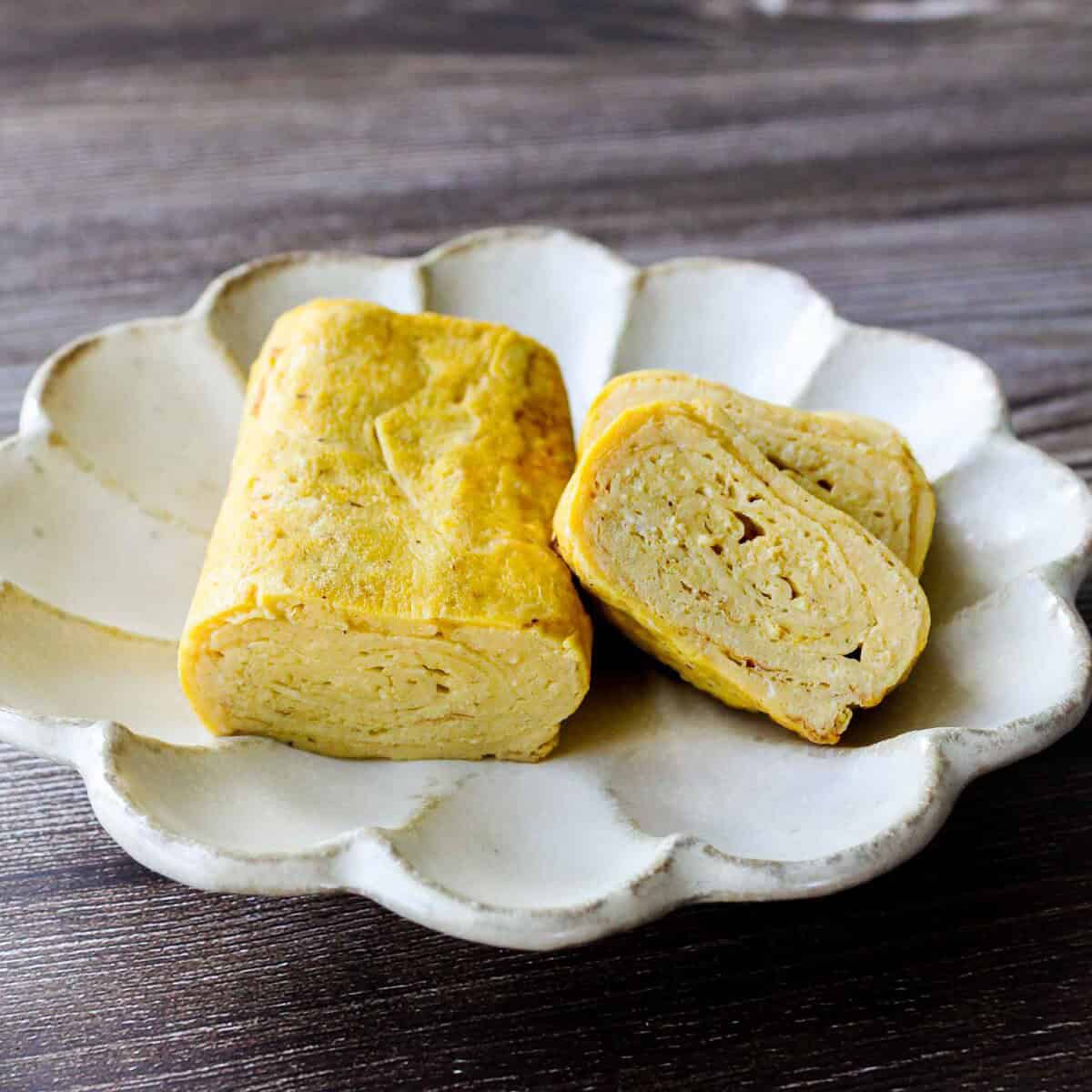Ingredients
Method
Make the Egg Mixture
- Combine ingredients: Add 3 large eggs, 2 tablespoons water, 1.5 teaspoon pure maple syrup, ¾ teaspoon soy sauce, ½ teaspoon dashi powder, and ¼ teaspoon cornstarch to a medium bowl.
- Mix the egg: Hold your chopsticks so they touch the bottom of the bowl, and move them side to side vigorously to “cut” the egg whites. Avoid whisking in circles to prevent adding air.
- Check texture: Lift your chopsticks. If the mixture runs down in a thin, smooth stream, it’s ready.
Make Tamagoyaki with a Square Pan
- Prep the pan: Heat your tamagoyaki pan over low to medium heat.
- Prep the oil: Fold a paper towel, soak it in oil, and lightly grease the pan.
- Test the temperature: Hover your hand above the pan. If it feels warm, dip chopsticks into the egg and draw a line on the pan. A gentle sizzle means it’s ready. If it starts smoking, cool it briefly on a damp towel.
- Pour the first layer: Add about ⅓ of the egg mixture. Stir gently until it’s loosely set, not fully scrambled. Stop stirring when a little liquid remains, then tilt the pan to cover the bottom evenly. Pop any bubbles with chopsticks.
- Roll it up: When the bottom and edges are set and the surface is slightly jiggly, loosen the edges with chopsticks and roll from the back toward you. Let it rest a moment to seal, then continue rolling to the end.
- Prep for the next layer: Lightly oil the pan again and move the rolled omelet to the top. Oil the front side of the pan as well.
- Add the second layer: Check the pan’s temperature, then pour another ⅓ of the egg mixture. Lift the roll slightly so the new layer flows underneath. Stir gently to create another soft layer, but keep the connection between the roll and the new layer.
- Roll again: When the bottom and edges are mostly set and the surface still looks slightly jiggly, roll it up just like before.
- Finish the last layer: Check the pan temperature, and repeat with the remaining mixture.
- Seal and shape: Turn off the heat and gently press the sides against the pan to seal. Transfer to a paper towel or rolling mat, shape it while warm, and let it cool before slicing into 6–8 pieces.
Make Tamagoyaki with a Round Pan
- Pour and cook: When the pan is hot, pour ⅓ of the egg mixture into half of the pan and stir gently.
- Shape it: When the bottom and edges are set but the surface is still jiggly, fold the round edge toward the center to form a rectangle, then roll from the top.
- Repeat: Grease the pan, check the pan temperature, and repeat two more times with the remaining mixture.
- Finish and shape: Roll with a paper towel or mat, let it cool, then slice.
Notes
- Ingredients
- Dashi powder: Optional but adds umami. Use additive-free dashi powder like Kayanoya or substitute with regular dashi. Avoid mentsuyu.
- Pure maple syrup: Replaces sugar for gentle sweetness. Agave or honey works too but may make it sweeter and brown faster.
- Variations: Add crab, nori, cheese, or scallions.
- Serving suggestions: Tamagoyaki works well as a side with rice, miso soup, a main like nikujaga, and one or two veggie sides such as sunomono, or you can enjoy it as a main by pairing it with rice and a veggie-packed miso soup for a simple, satisfying meal.
- Storage: Keep cooled tamagoyaki in an airtight container in the fridge for up to 2 days or freeze up to 2 weeks. Fully cook if packing in bento.
- Reheating: Enjoy cold or warm. Defrost in the fridge or microwave 15–45 seconds if frozen.
